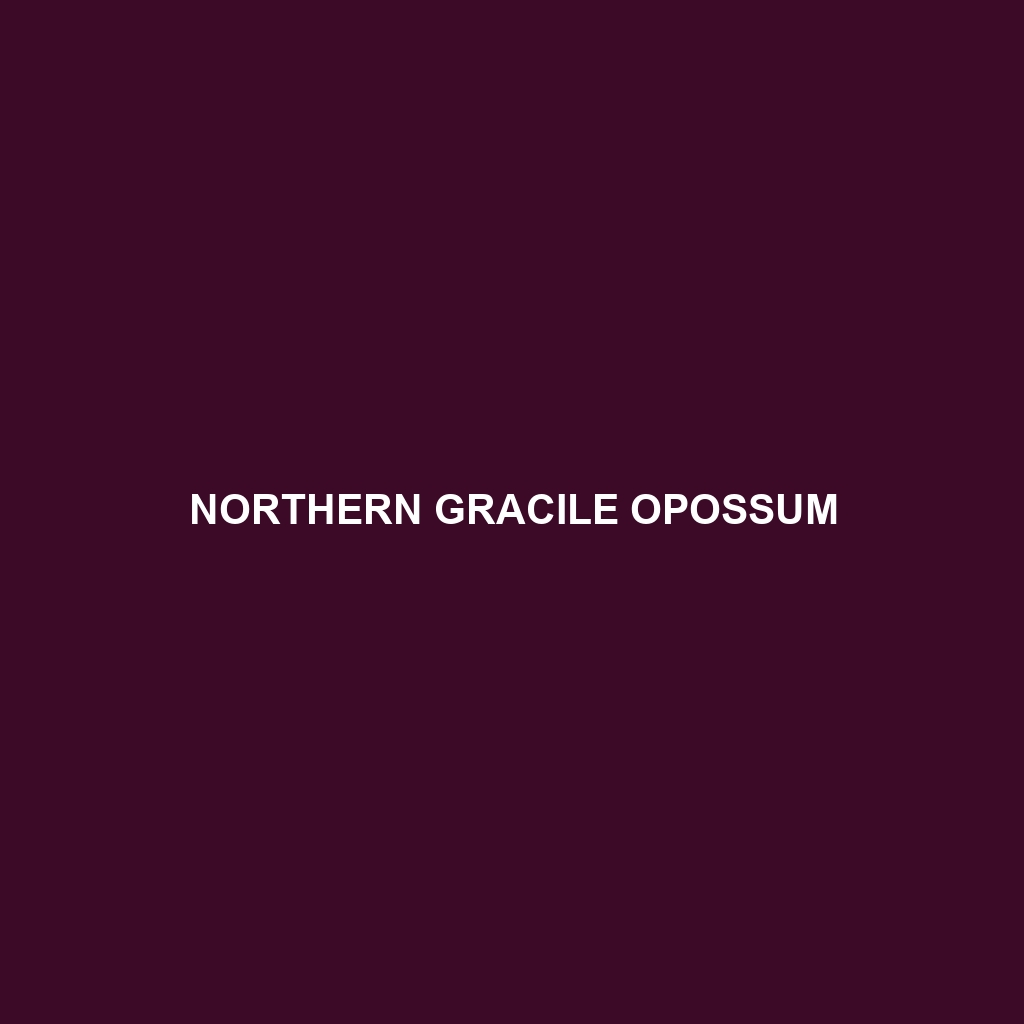Northern Gracile Opossum (Gracilinanus marica)
The Northern Gracile Opossum is a small, nocturnal marsupial native to the northern regions of South America. Known for its agile movements and slender body, this opossum exhibits a wide range of fascinating attributes that make it a unique member of the Didelphidae family. Often found in diverse habitats, from tropical forests to savannas, the Northern Gracile Opossum plays a crucial role in its ecosystem.
Physical Characteristics:
Size: The Northern Gracile Opossum is a relatively small marsupial, with adults typically measuring about 10 to 15 centimeters (4 to 6 inches) in body length, not including the tail. Their tails add an additional 11 to 14 centimeters (4.3 to 5.5 inches) to their total length.
Coloration: This opossum features a soft, dense fur coat that ranges from a grayish-brown to reddish-brown on the dorsal side, with a lighter, creamy white or pale yellow underbelly. The coloration helps them blend into their natural surroundings, providing camouflage from predators.
Special Features: One of the distinctive characteristics of the Northern Gracile Opossum is its prehensile tail, which is often used for grasping branches and aiding in their arboreal lifestyle. They also have large, black eyes that enhance their night vision, essential for their nocturnal habits.
Behavior:
Social Interactions: Northern Gracile Opossums are generally solitary animals, coming together primarily for mating purposes. They communicate through a series of vocalizations, body language, and scent marking.
Feeding Habits: As omnivores, their diet includes a variety of fruits, insects, small vertebrates, and other invertebrates. Their opportunistic feeding behavior allows them to adapt to different food sources available in their habitat.
Ecological Roles: These opossums play a significant role in seed dispersal due to their fruit consumption, which helps maintain plant diversity and forest health. They also control insect populations, acting as natural pest regulators.
Habitats:
Range: The Northern Gracile Opossum is found in the northern regions of South America, including parts of Venezuela, Colombia, and Trinidad and Tobago.
Preferred Habitats: They inhabit a variety of environments such as tropical rainforests, dry forests, and savannas. They are equally comfortable in secondary forests and areas close to human settlements, showcasing their adaptability.
Adaptations:
Arboreal Lifestyle: Their prehensile tail and sharp claws are perfect adaptations for climbing trees and navigating the forest canopy. These physical traits allow them to access food sources that are unavailable to ground-dwelling animals.
Nocturnal Behavior: Being nocturnal helps them avoid many predators that are active during the day. Their large eyes are an adaptation for enhanced night vision, allowing them to hunt and forage effectively in low light conditions.
Conservation Status:
The Northern Gracile Opossum is currently listed as “Least Concern” by the International Union for Conservation of Nature (IUCN). However, habitat destruction and fragmentation due to agricultural expansion and urbanization pose potential threats to their populations. Conservation efforts focusing on habitat preservation are essential to ensure their continued survival.
Fun Facts:
Marsupium Absence: Unlike many other marsupials, female Northern Gracile Opossums lack a fully developed pouch (marsupium). Instead, the young cling to the mother’s teats and fur during their early development stages.
Agility: True to their name, these opossums are incredibly agile and can make swift, graceful movements through the treetops, thanks to their lightweight and slender build.
Longevity: In the wild, these opossums have a relatively short lifespan, averaging around 2 to 3 years, which is typical for small marsupials.
By understanding the Northern Gracile Opossum’s unique attributes and ecological significance, we can appreciate the vital role they play in their ecosystems and the importance of their conservation.
